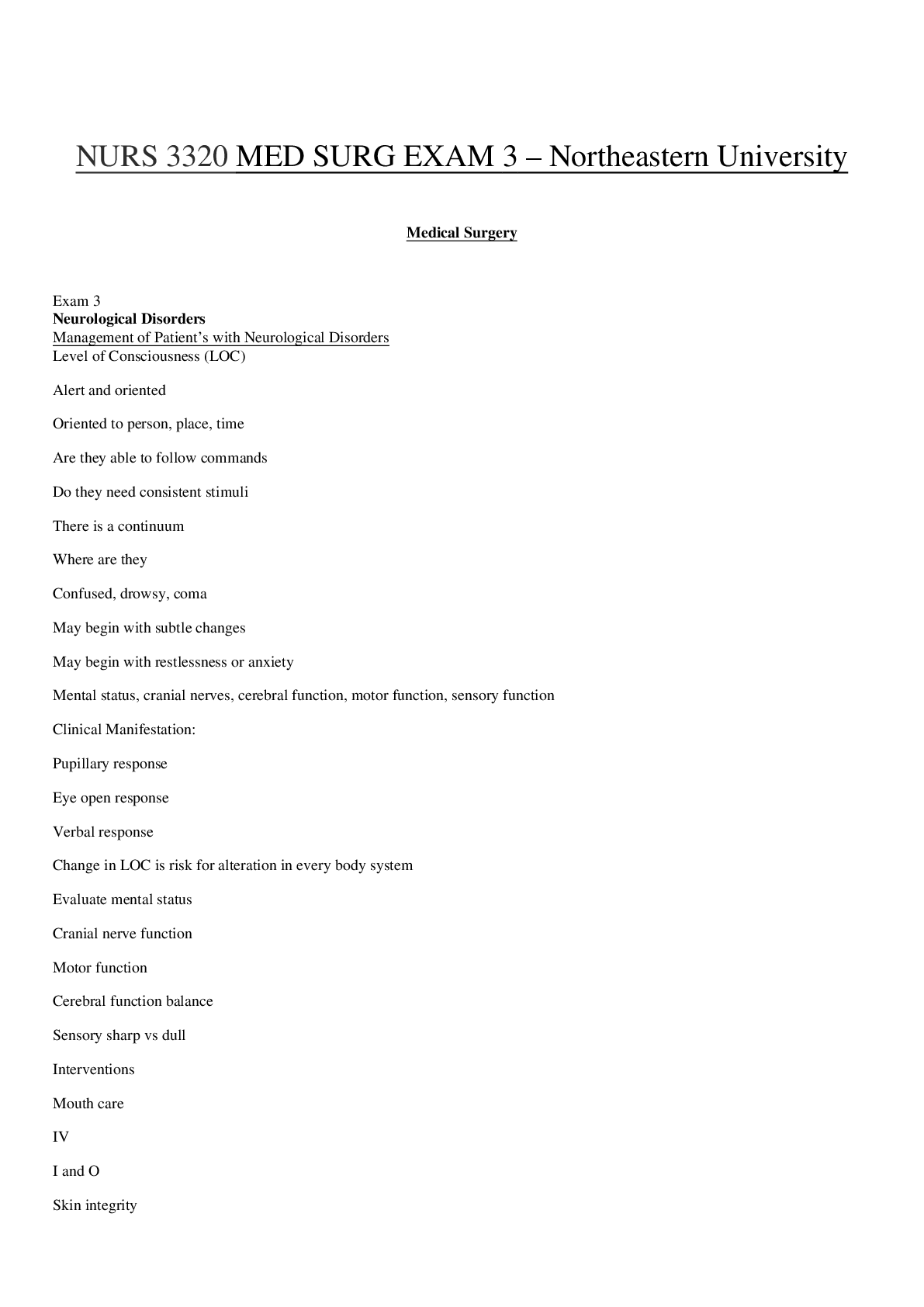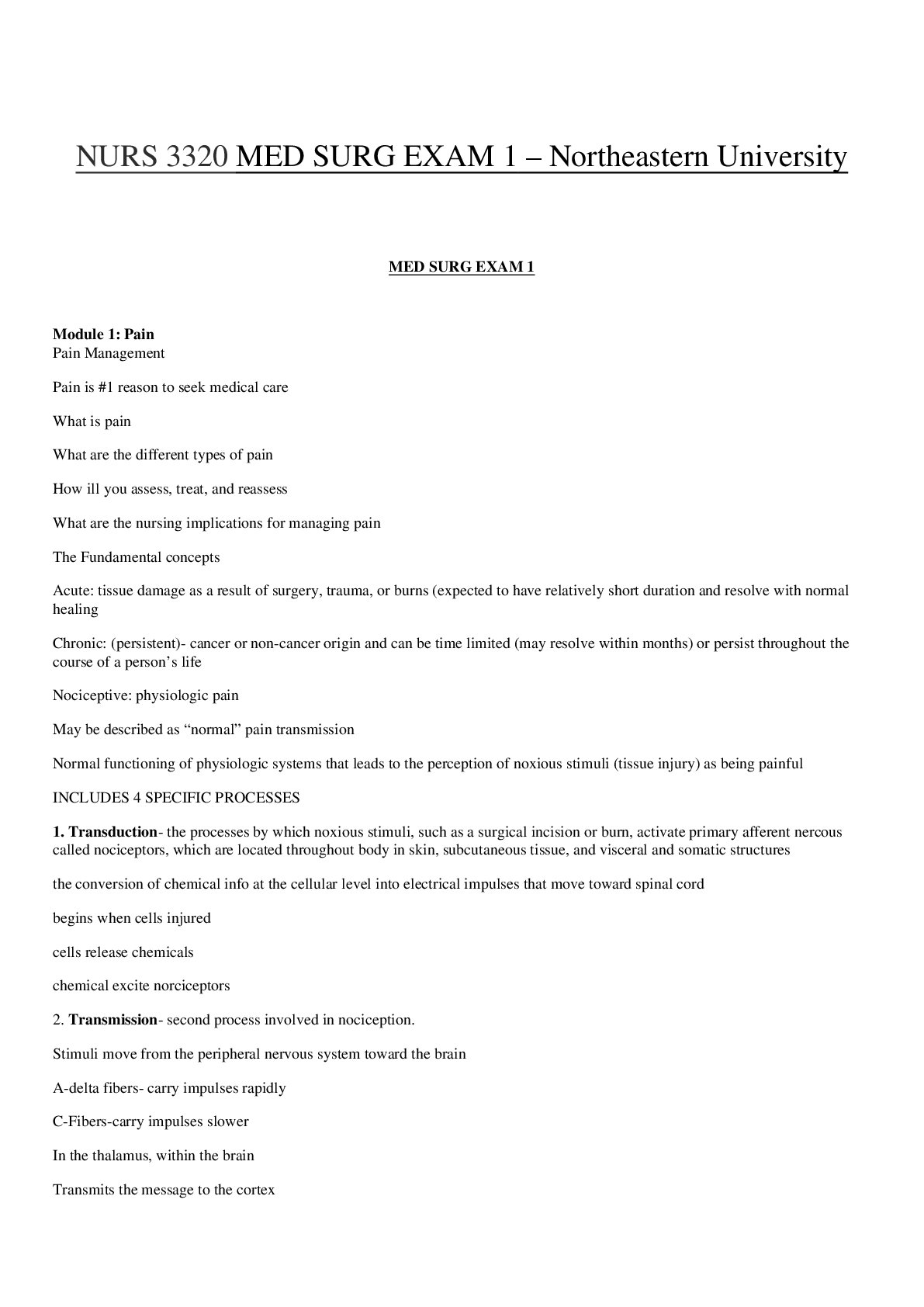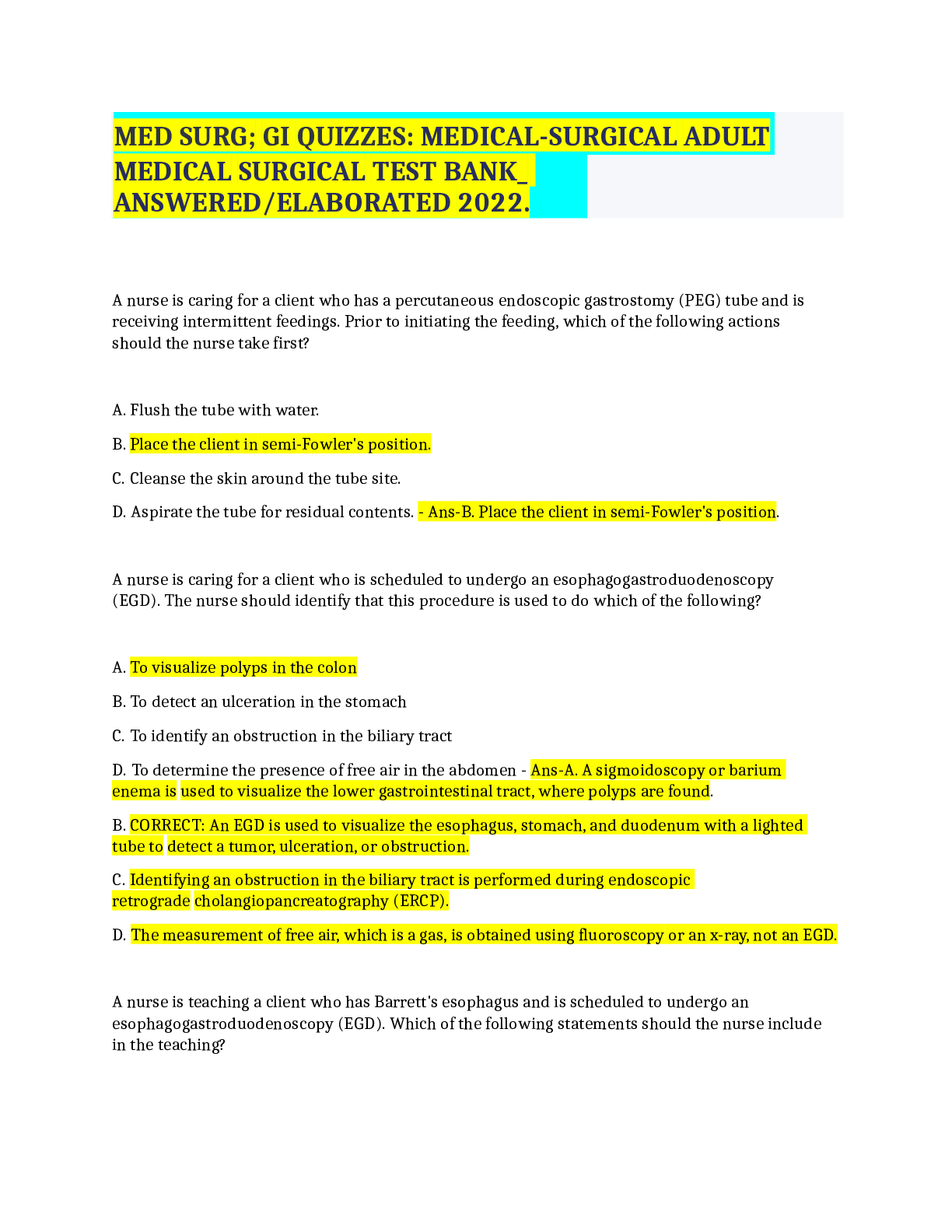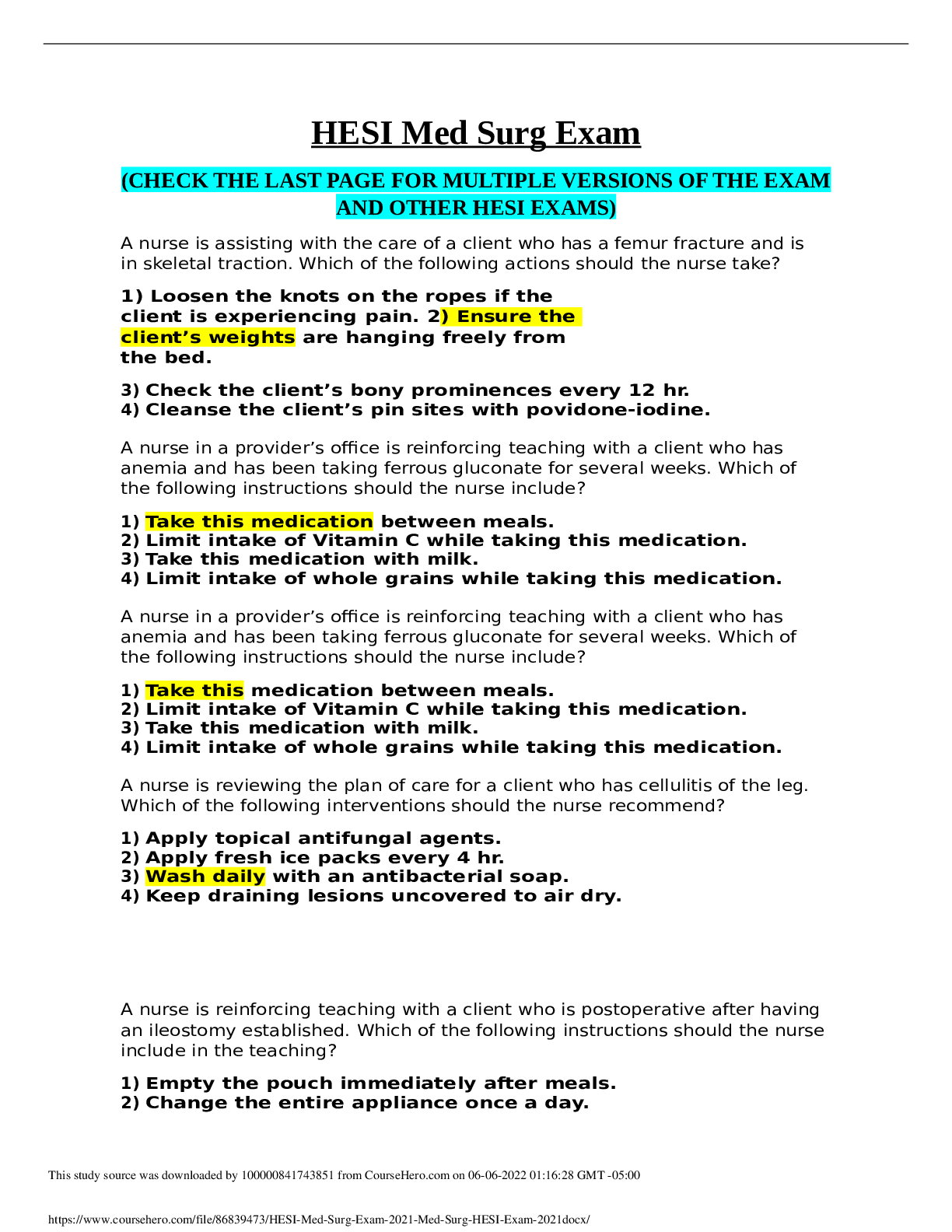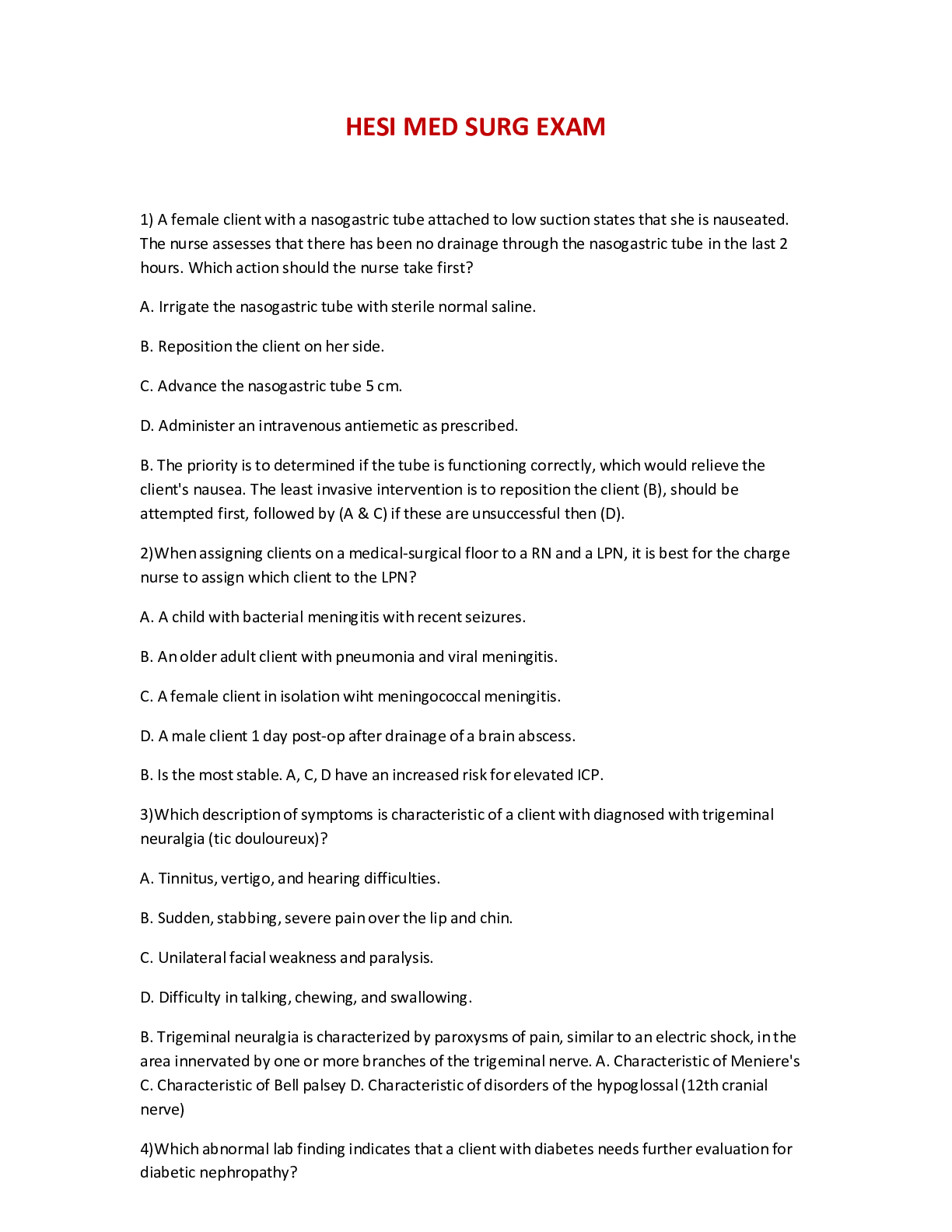*NURSING > EXAM > RN HESI Med Surg Exam Pack | 2019 - 2021 Exams Combined | Best for HESI RN Med Surg 2022 Exam (All)
RN HESI Med Surg Exam Pack | 2019 - 2021 Exams Combined | Best for HESI RN Med Surg 2022 Exam
Document Content and Description Below
A male client tells the clinic nurse that he is experiencing burning on urination, and assessment reveals that he had sexual intercourse four days ago with a woman he casually met. Which action should... the nurse implement? answer: obtain a specimen of urethral drainage for culture 39. A client with Addison’s disease started taking hydrocortisone in a divided daily dose last week. It is most important for the nurse to monitor which serum laboratory value? answer: Glucose 40. A client with acquired immunodeficiency syndrome (AIDS) has impaired gas exchange from a respiratory infection. Which assessment finding warrants immediate intervention by the nurse? answer: elevated temperature 41. An older male client tells the nurse that he is losing sleep because he has to get up several times at night to go to the bathroom, that he has trouble starting his urinary stream, and that he does not feel like his bladder is ever empty. Which intervention should the nurse implement? answer: collect a urine specimen for culture analysis. 42. Fluids are restricted to 1,500 mL daily for a male client with acute kidney injury (AKI). He is frustrated and complaining of constant thirst, and the nurse discovers that the family is providing the client with additional fluids. Which intervention of the nurse implement? answer: provide the client with oral swabs to moisten his mouth. 43. During a paracentesis, two liters of fluid are removed from the abdomen of a client with ascites. A drainage bag is placed, and 50 mL of clear, straw‐colored fluid drains within the first hour. What action should the nurse implement? answer: Continue to monitor the fluid output. 44. While assessing a client with degenerative joint disease, the nurse observes Heberden’s nodes large prominences on the client’s fingers that are reddened. The client reports that the nodes are painful. Which action should the nurse take? answer: discuss approaches to chronic pain control with the client. 45. A client who took a camping vacation two weeks ago in a country with a tropical climate comes to the clinic describing vague symptoms and diarrhea for the past week. Which finding is most important for the nurse report to the healthcare provider? answer: jaundiced sclera. 46. Ten hours following thrombolysis for an ST elevation myocardial infarction (STEMI), a client is receiving a lidocaine infusion for isolated runs of ventricular tachycardia (VT). Which finding should the nurse document in the electronic medical record as a therapeutic response to the lidocaine infusion? answer: Cessation of chest pain 47. After a computer tomography (CT) scan with intravenous contrast medium, a client returns to the room complaining of SOB and itching. Which intervention should the nurse implement? 6 | P a g e answer: prepare a dose of epinephrine (adrenalin). 7 | P a g e 48. The nurse reports that a client is at risk for a brain attack (stroke) based on which assessment finding? answer: Nuchal rigidity 49. The nurse is preparing to administer enoxaparin (lovenox) 135 mg subcutaneously. The medication is available in a cartridge labeled 150 mg/mL. How many mL should the nurse administer? answer: 0.9 mL After calculations, the answer will show 0.9 mL. If you have to round for some reason in this answer, simply round to the nearest tenth. 50. The nurse is obtaining a client’s fingerstick glucose level. After gently milking the client’s finger, the nurse observes that the distal tip of the finger appears reddened and engorged. What action should the nurse take? answer: collect the blood sample 51. A client admitted to a surgical unit is being evaluated for an intestinal obstruction. The healthcare provider prescribes a nasogastric tube (NGT) to be inserted and placed to intermittent low wall suction. Which intervention should the nurse implemented to facilitate proper tube placement? answer: insert tube with client’s head tilted back. 52. A young female client with seven children is having frequent morning headaches, dizziness, and blurred vision. Her blood pressure (BP) is 168/104 mm Hg. The client reports that her husband recently lost his job and she is not sleeping well. After administering a STAT dose of an antihypertensive IV medication, which intervention is most important for the nurse to implement? answer: Use an automated BP machine to monitor for hypotension. 53. The wife of a client with Parkinson’s disease expresses concern because her husband has lost so much weight. Which teaching is best for the nurse to provide? answer: Invite friends over regularly to share in meal times. 54. A client who was discharge 8 months ago with cirrhosis and ascites is admitted with anorexia and recent hemoptysis. The client is drowsy but responds to verbal stimuli. The nurse programs a blood pressure monitor to take readings every 15 minutes. Which assessment should the nurse implement first? answer: Palpate the abdomen for tenderness and rigidity. 55. A client with urolithiasis is preparing for discharge after lithotripsy. Which intervention should the nurse include in the client’s postoperative discharge instructions? answer: monitor urinary stream for decreases in output. 8 | P a g e HESI MED SURG 2021 1) A female client with a nasogastric tube attached to low suction states that she is nauseated. The nurse assesses that there has been no drainage through the nasogastric tube in the last 2 hours. Which action should the nurse take first? A. Irrigate the nasogastric tube with sterile normal saline. B. Reposition the client on her side. C. Advance the nasogastric tube 5 cm. D. Administer an intravenous antiemetic as prescribed. B. The priority is to determined if the tube is functioning correctly, which would relieve the client's nausea. The least invasive intervention is to reposition the client (B), should be attempted first, followed by (A & C) if these are unsuccessful then (D). 2) When assigning clients on a medical-surgical floor to a RN and a LPN, it is best for the charge nurse to assign which client to the LPN? A. A child with bacterial meningitis with recent seizures. B. An older adult client with pneumonia and viral meningitis. C. A female client in isolation wiht meningococcal meningitis. D. A male client 1 day post-op after drainage of a brain abscess. B. Is the most stable. A, C, D have an increased risk for elevated ICP. 3) Which description of symptoms is characteristic of a client with diagnosed with trigeminal neuralgia (tic douloureux)? A. Tinnitus, vertigo, and hearing difficulties. B. Sudden, stabbing, severe pain over the lip and chin. C. Unilateral facial weakness and paralysis. D. Difficulty in talking, chewing, and swallowing. B. Trigeminal neuralgia is characterized by paroxysms of pain, similar to an electric shock, in the area innervated by one or more branches of the trigeminal nerve. A. Characteristic of Meniere's C. Characteristic of Bell palsey D. Characteristic of disorders of the hypoglossal (12th cranial nerve) 4) Which abnormal lab finding indicates that a client with diabetes needs further evaluation for diabetic nephropathy? A. Hypokalemia B. Microalbuminauria C. Elevated serum lipids D. Ketonuria B. Microalbuminuria is the earliest sign of nephropathy and indicates the need for follow-up evaluation. Hyperkalemia (A) is associated with end stage renal disease caused by diabetic nephropathy. (C) may be elevated in end stage renal disease. (D) may signal the onset of DKA. 5) An older male client comes to the geriatric screening clinic complaining of pain in his left calf. The nurse notices a reddened area on the calf of his right leg that is warm to touch and the nurse suspects that the client may have thrombophlebitis. Which addition assessment is most important for the nurse to perform? A. Measure calf circumference. B. Auscultate the client's breath sounds. C. Observe for ecchymosis and petechiae. D. Obtain the client's blood pressure. B. Since the client may have a pulmonary embolus secondary to the thrombophlebitis. A. Would support the nurses assessment. C. Least helpful since bruising is not associated with thrombophlebitis. D. Less important then auscultation. 6) The nurse know that a client taking diuretics must be assessed for the development of hypokalemia, and that hypokalemia will create changes in the client's normal ECG tracing. Which ECG change would be an expected finding in the client with hypokalemia? A. Tall, spiked T waves B. A prolonged QT interval C. A widening QRS complex D. Presence of a U wave D. A U wave is a positive deflection following the T wave and is often present with hypokalemia. A, B, C indicate hyperkalemia. 7) An older client is admitted with a diagnosis of bacterial pneumonia. The nurse's assessment of the client will most likely reveal which S/SX? A. Leukocytosis and febrile. B. Polycythemia and crackles. C. Pharyngitis and sputum production. D. Confusion and tachycardia. D. The onset of pneumonia is the older may be signaled by general deterioration, confusion, increased heart rate or increased respiratory rate. (A, B, C) are often absent in the older with bacterial pneumonia. 8) The nurse observes ventricular fibrillation on telemetry and upon entering the clients bathroom finds the client unconscious on the floor. What intervention should the nurse implement first? A. Administer an antidysrhythmic medication. B. Start cardiopulmonary resuscitation. C. Defibrillate the client at 200 joules. D. Assess the client's pulse oximetry. B. Ventricular fibrillation is a life-threatening dysrhythmia and CPR should be started immediately. A & C are appropriate but B is the priority. D does not address the seriousness of the situation. 9) An older female client with dementia is transferred from a long term care unit to an acute care unit. The client's children express concern that their mother's confusion is worsening. How should the nurse respond? A. [Show More]
Last updated: 1 year ago
Preview 1 out of 37 pages

Reviews( 0 )
Document information
Connected school, study & course
About the document
Uploaded On
Dec 03, 2022
Number of pages
37
Written in
Additional information
This document has been written for:
Uploaded
Dec 03, 2022
Downloads
0
Views
29

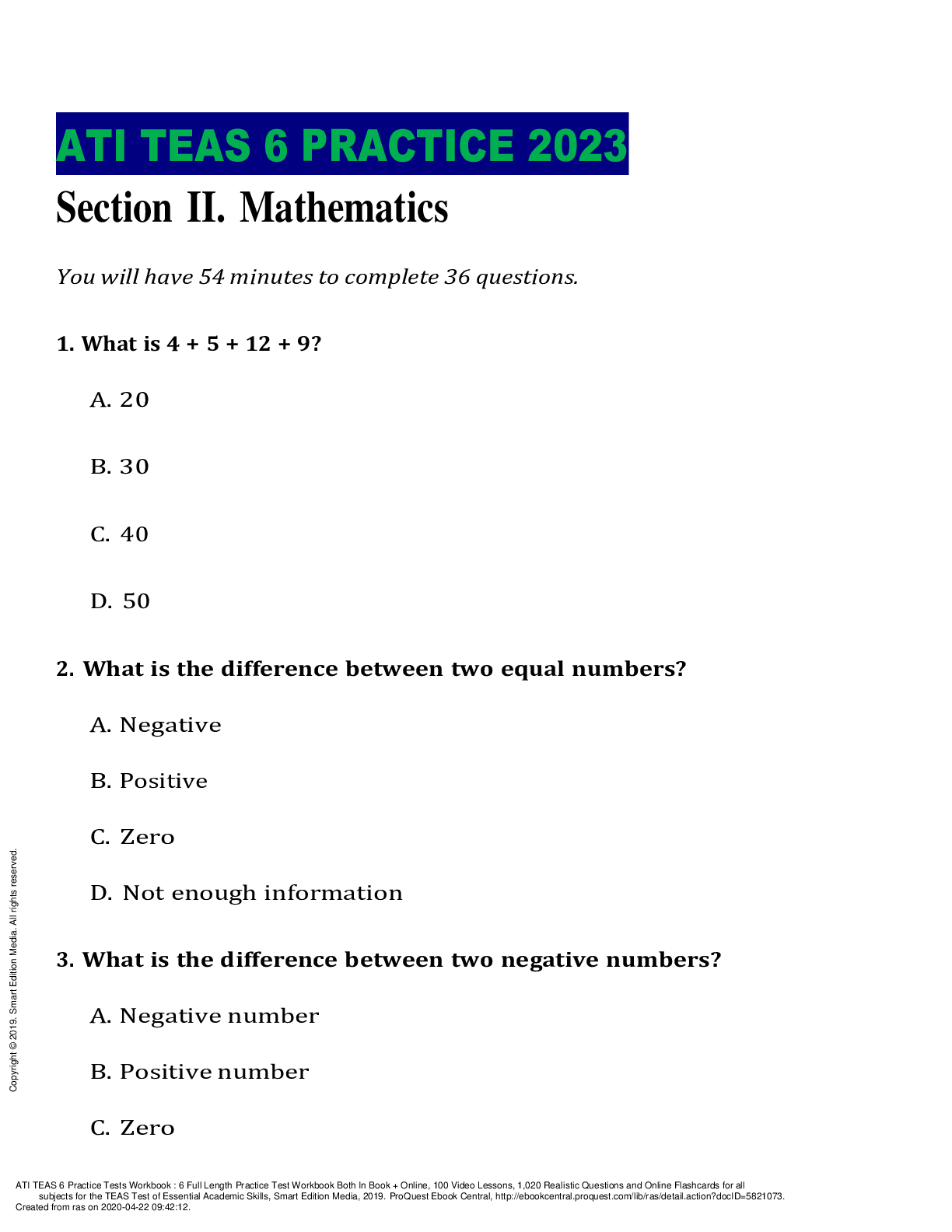


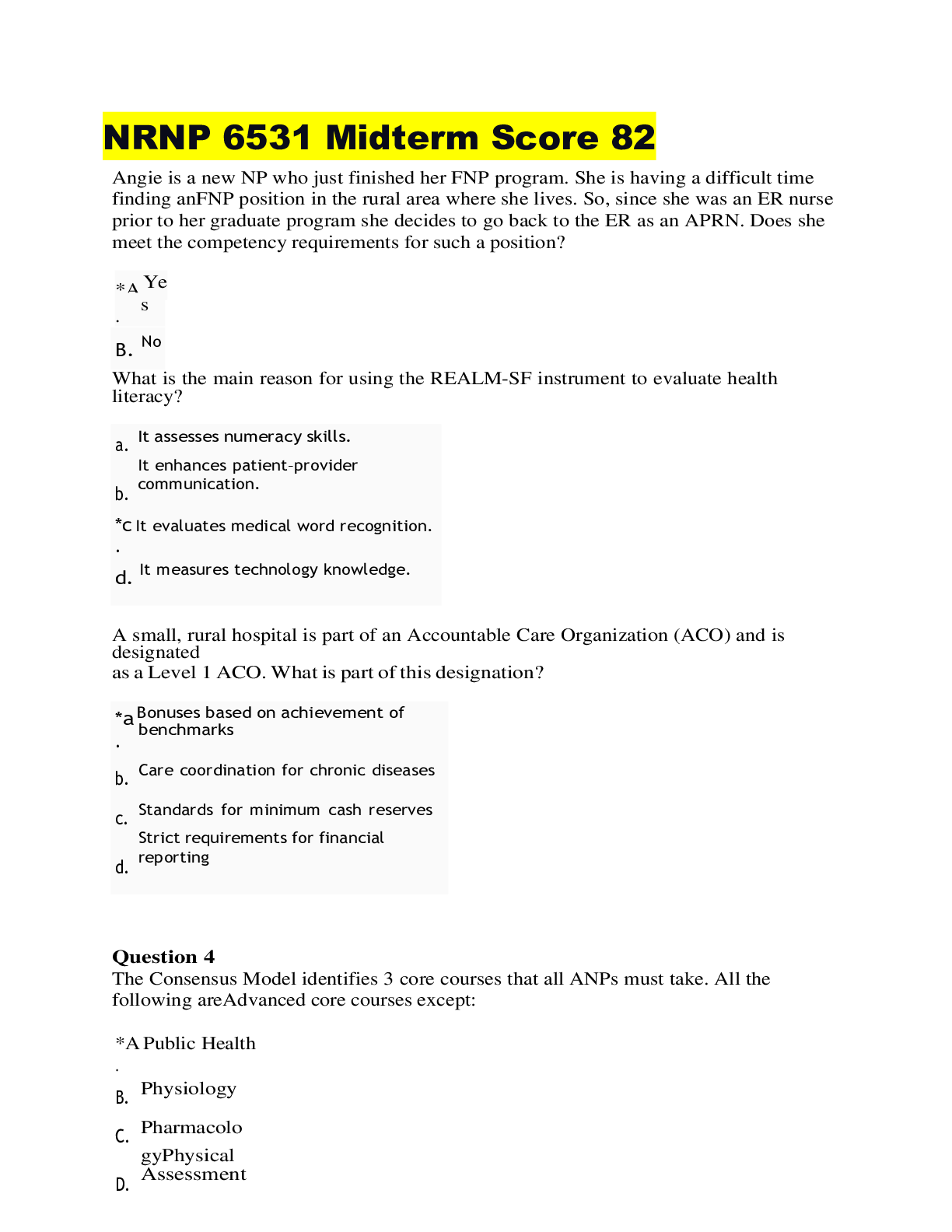
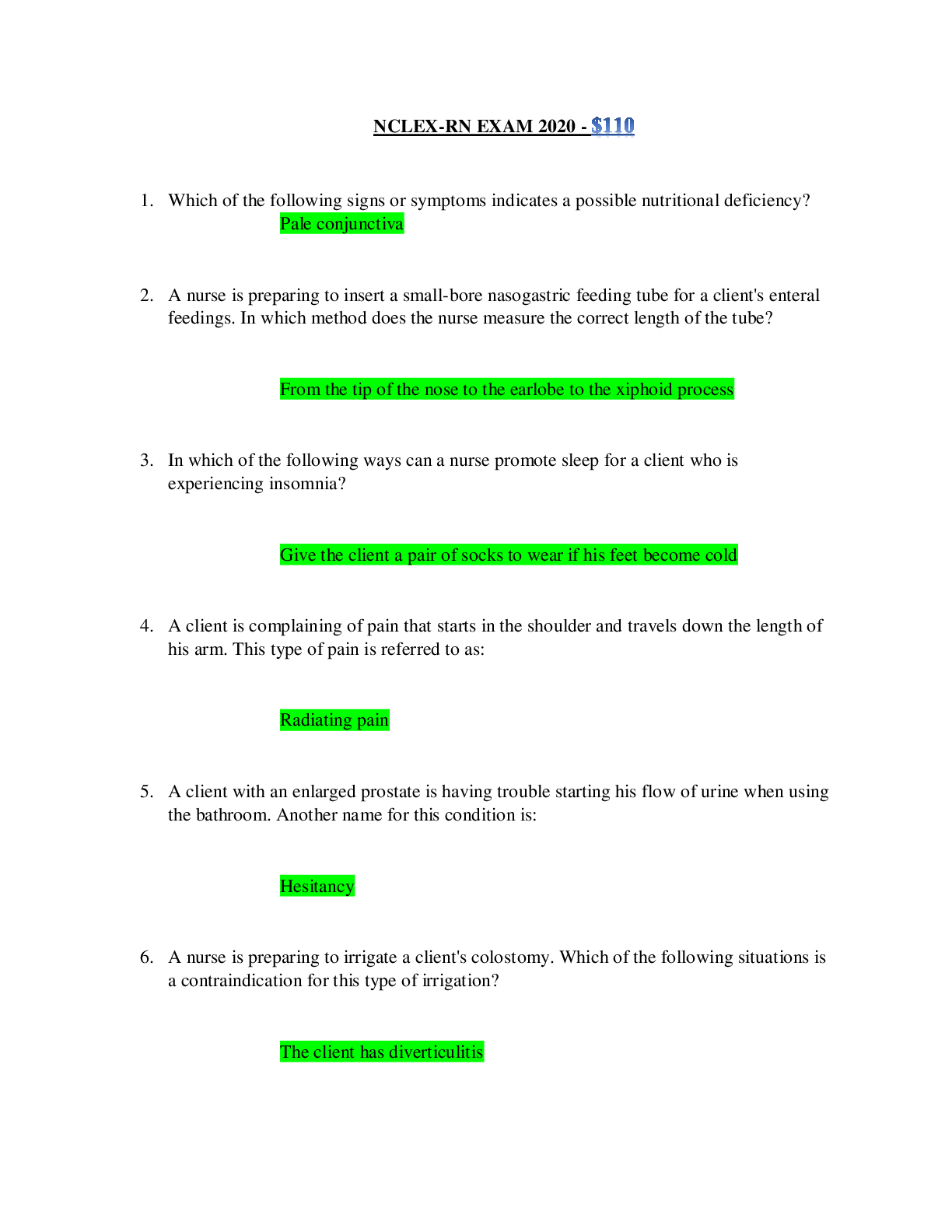
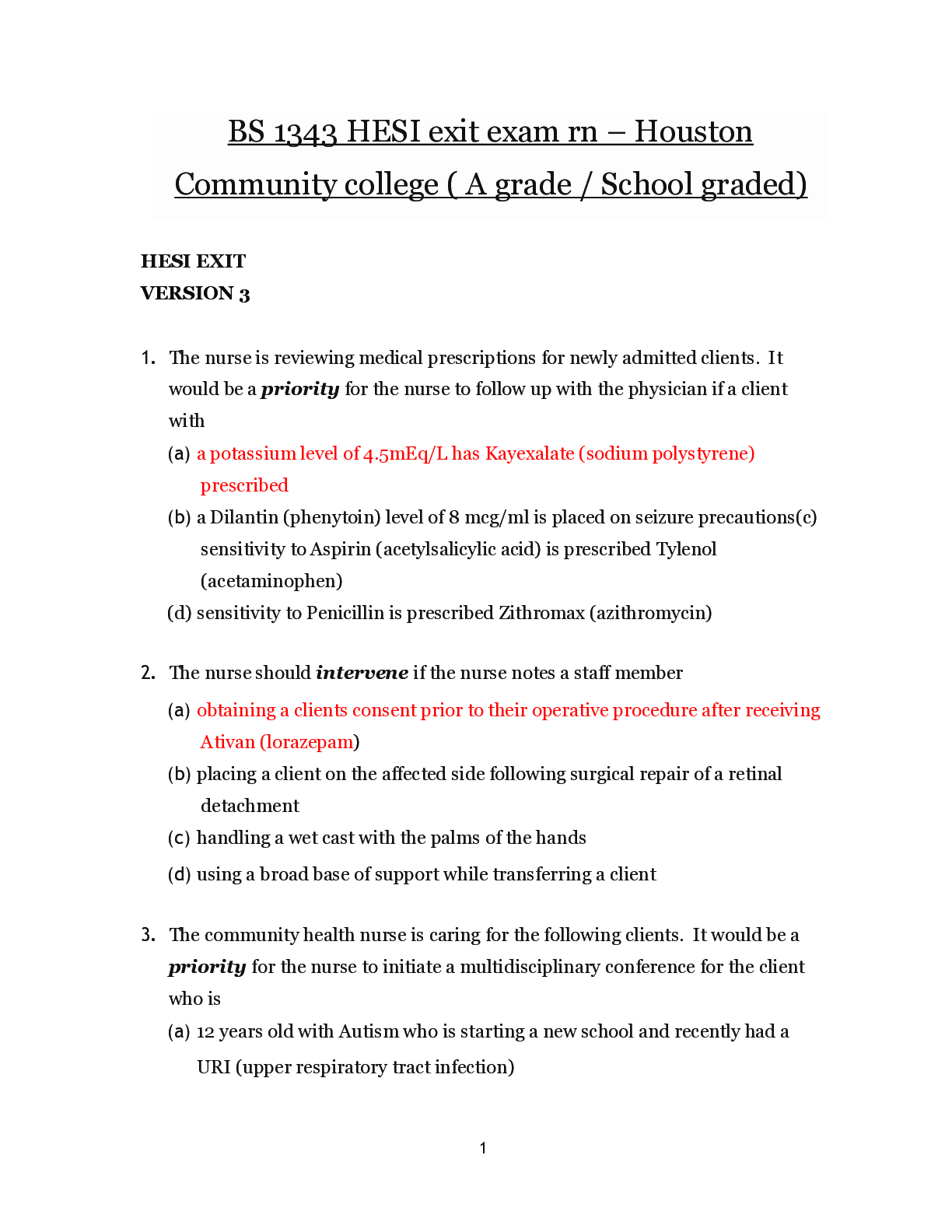
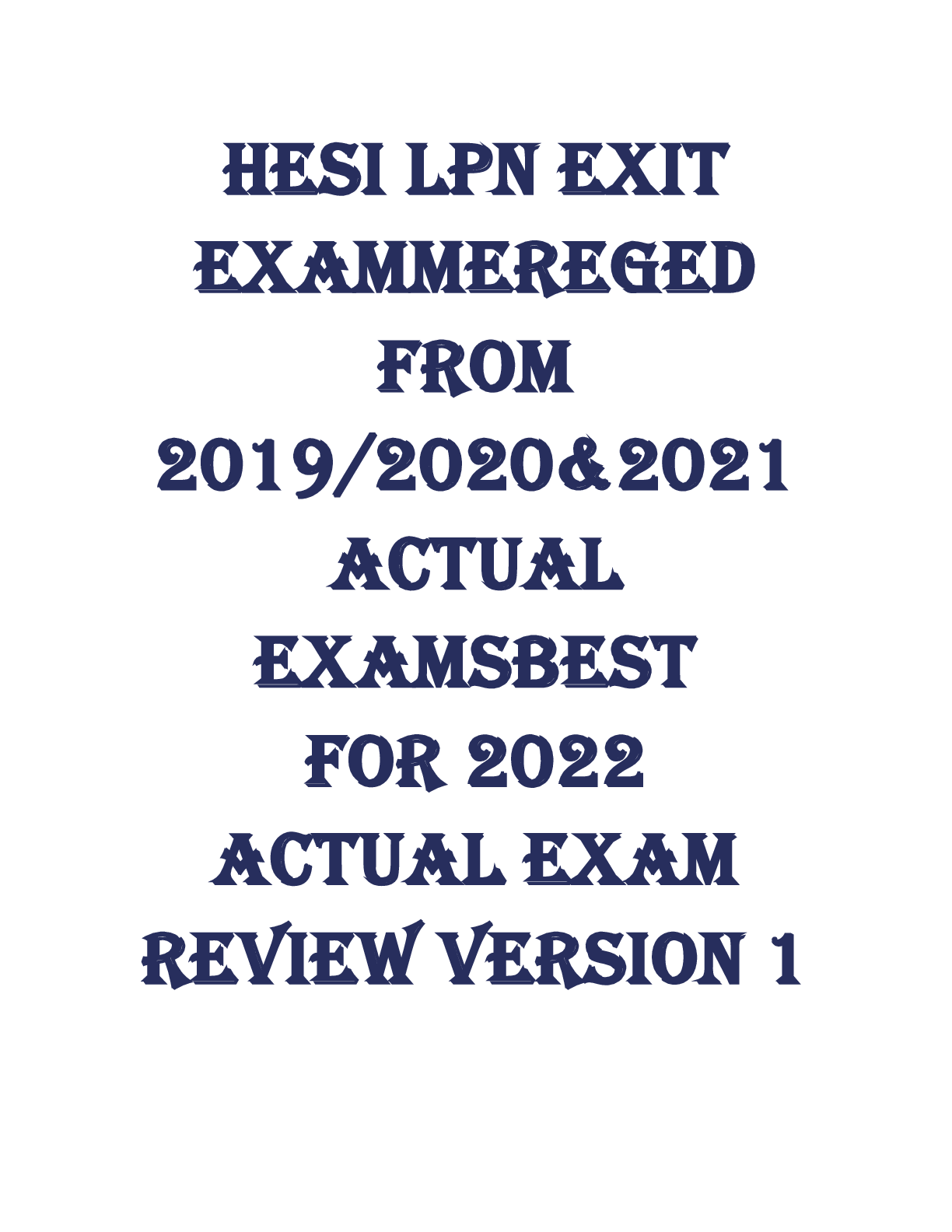
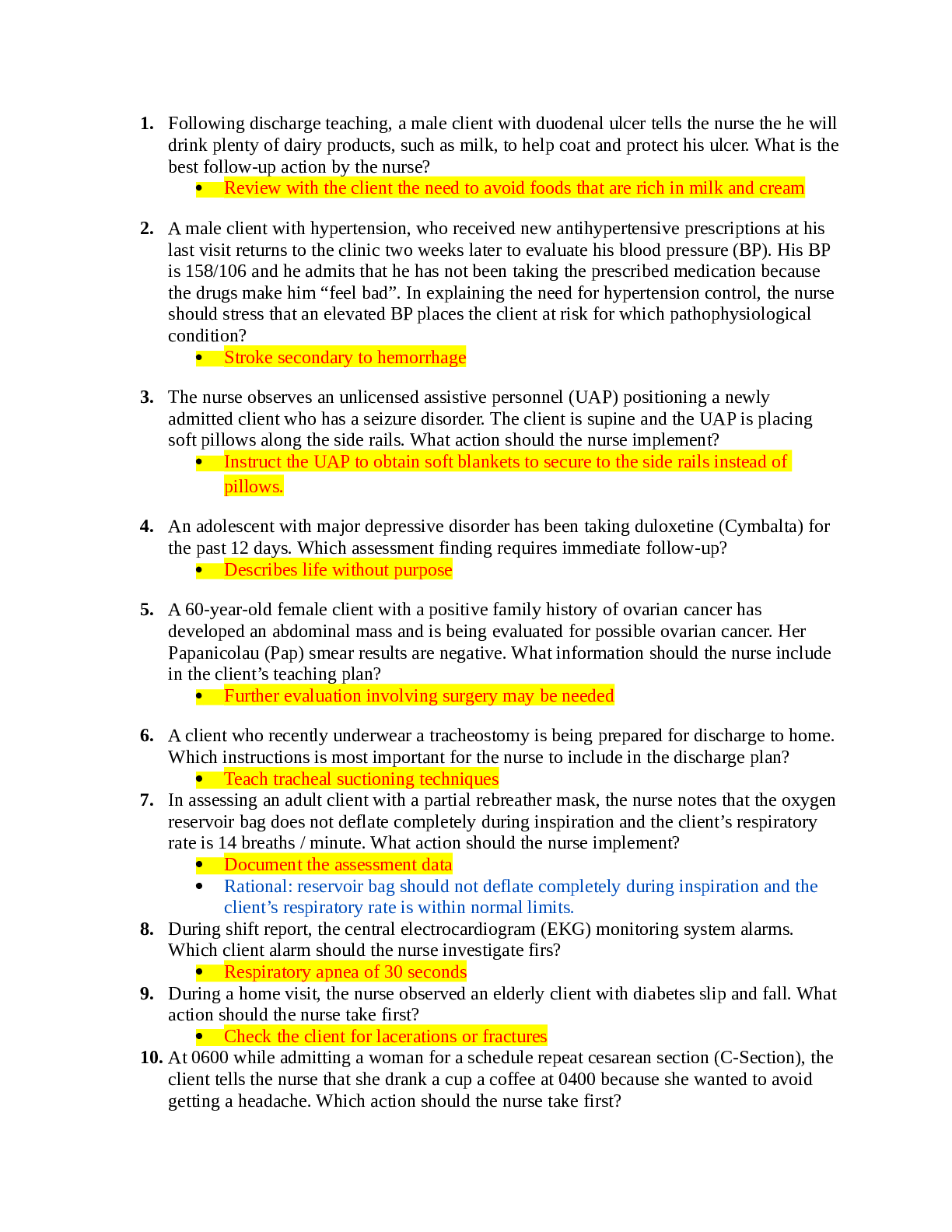
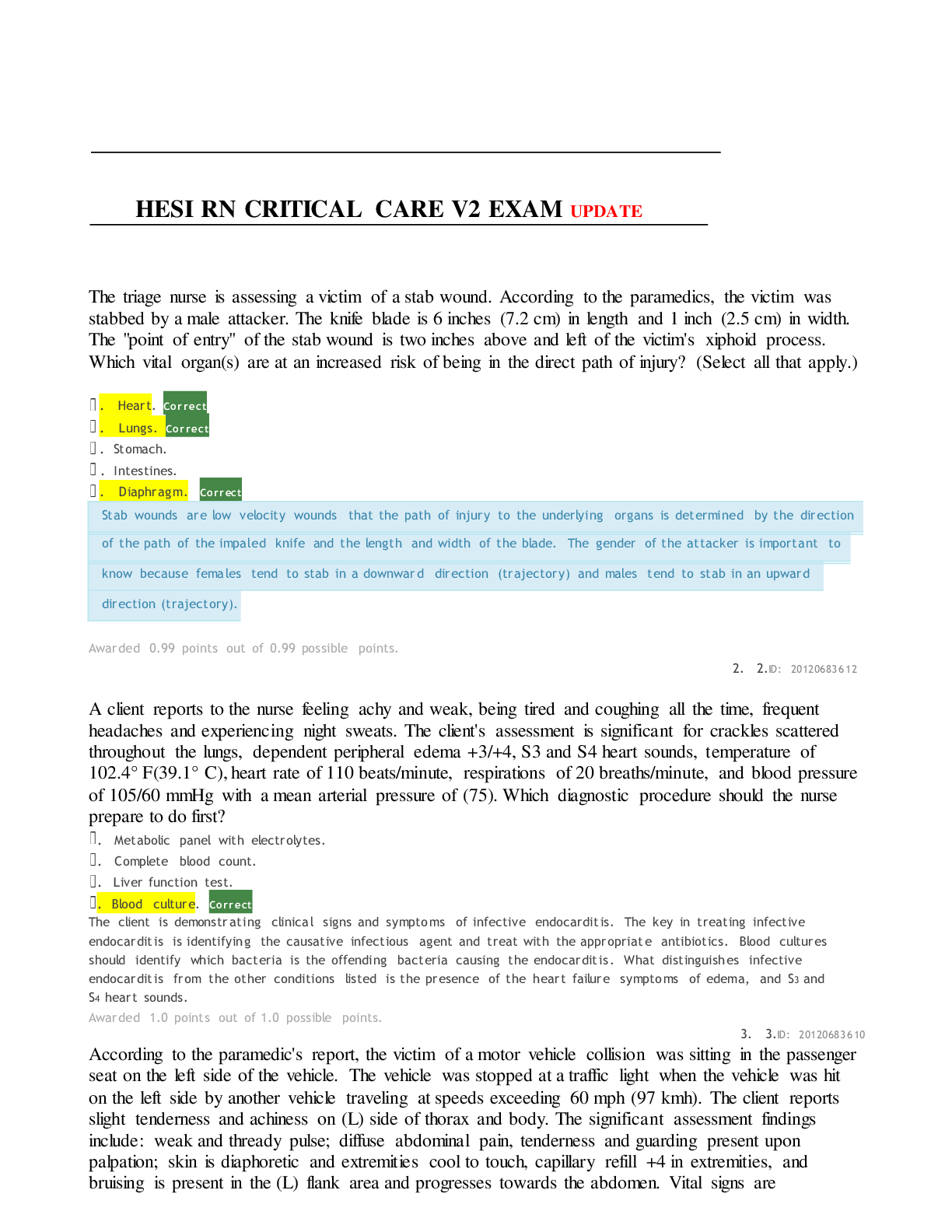
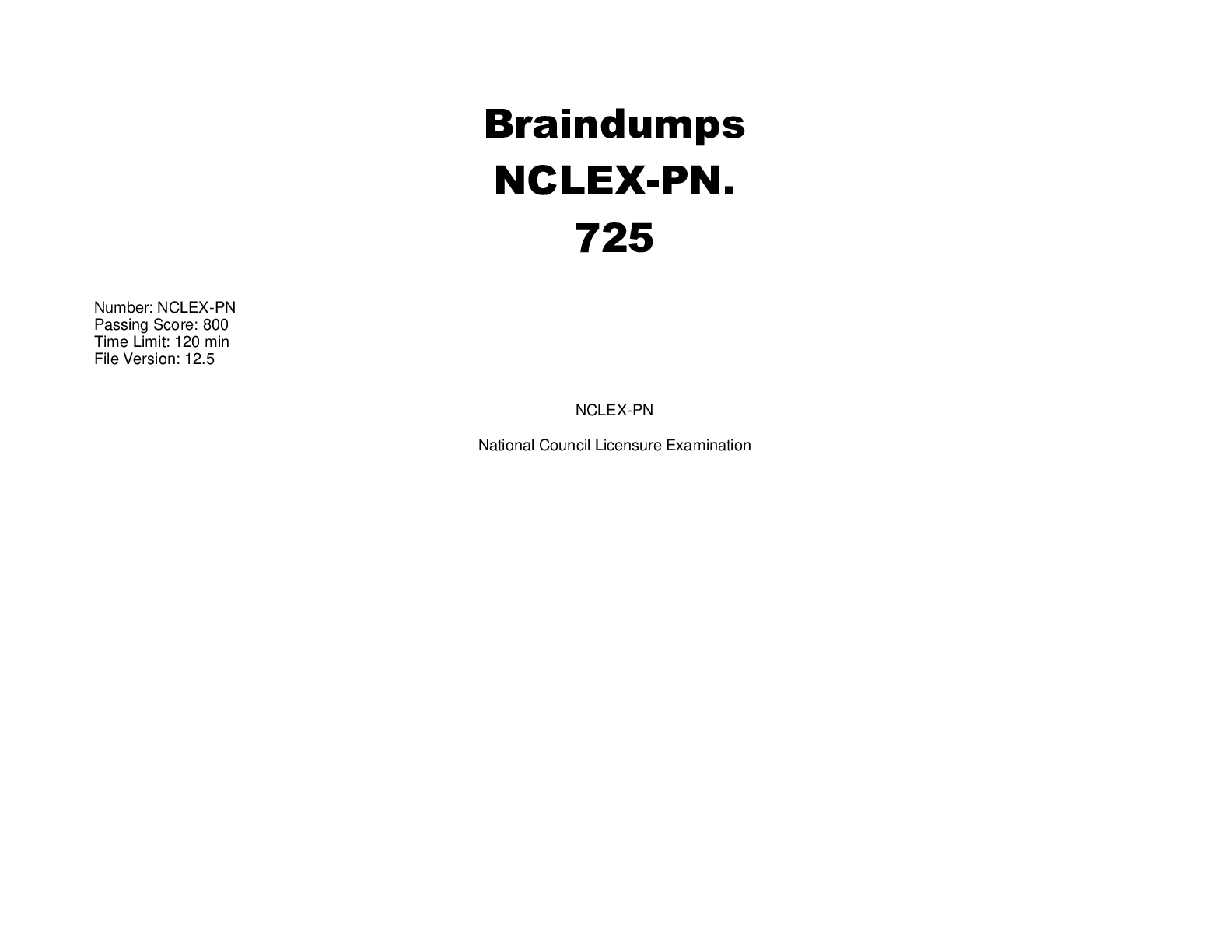



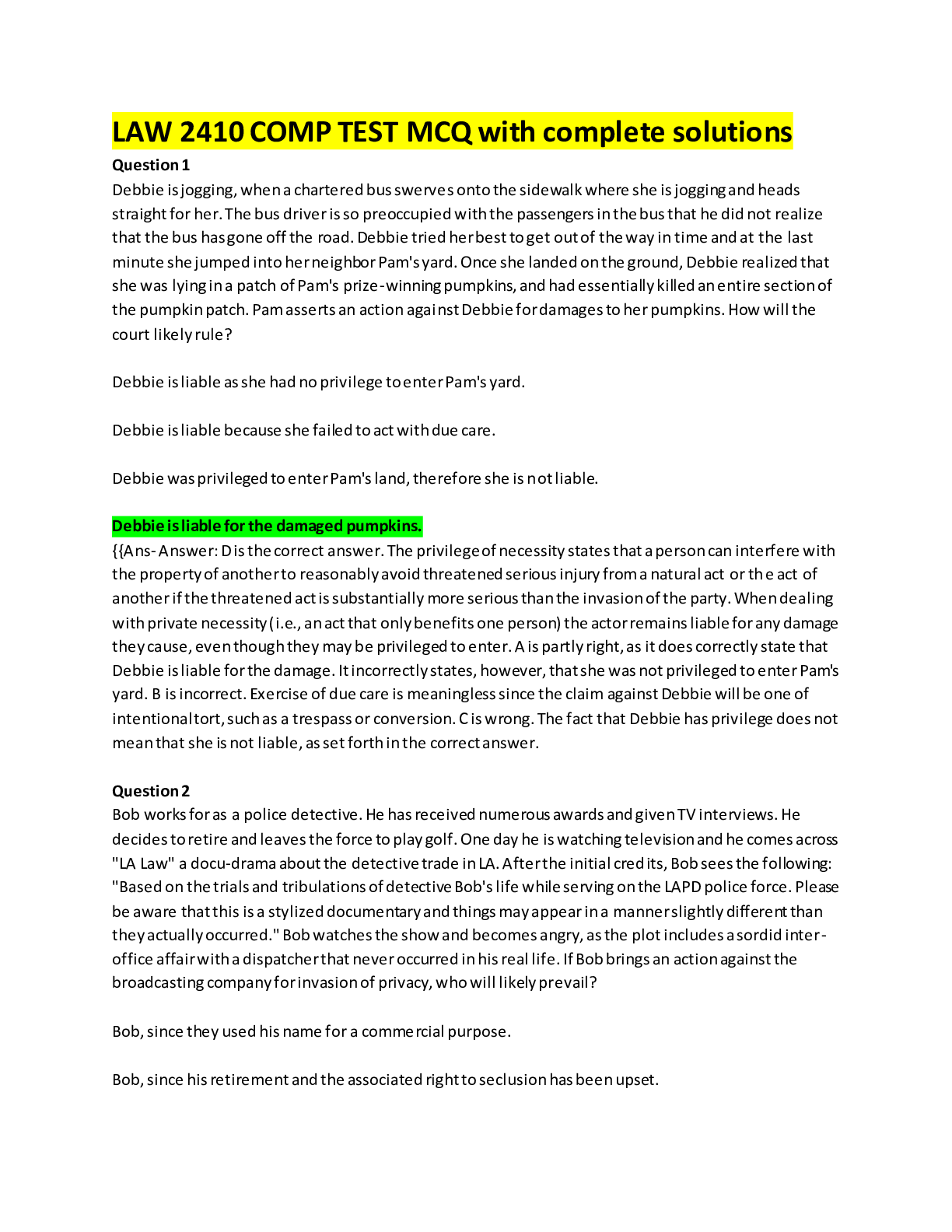

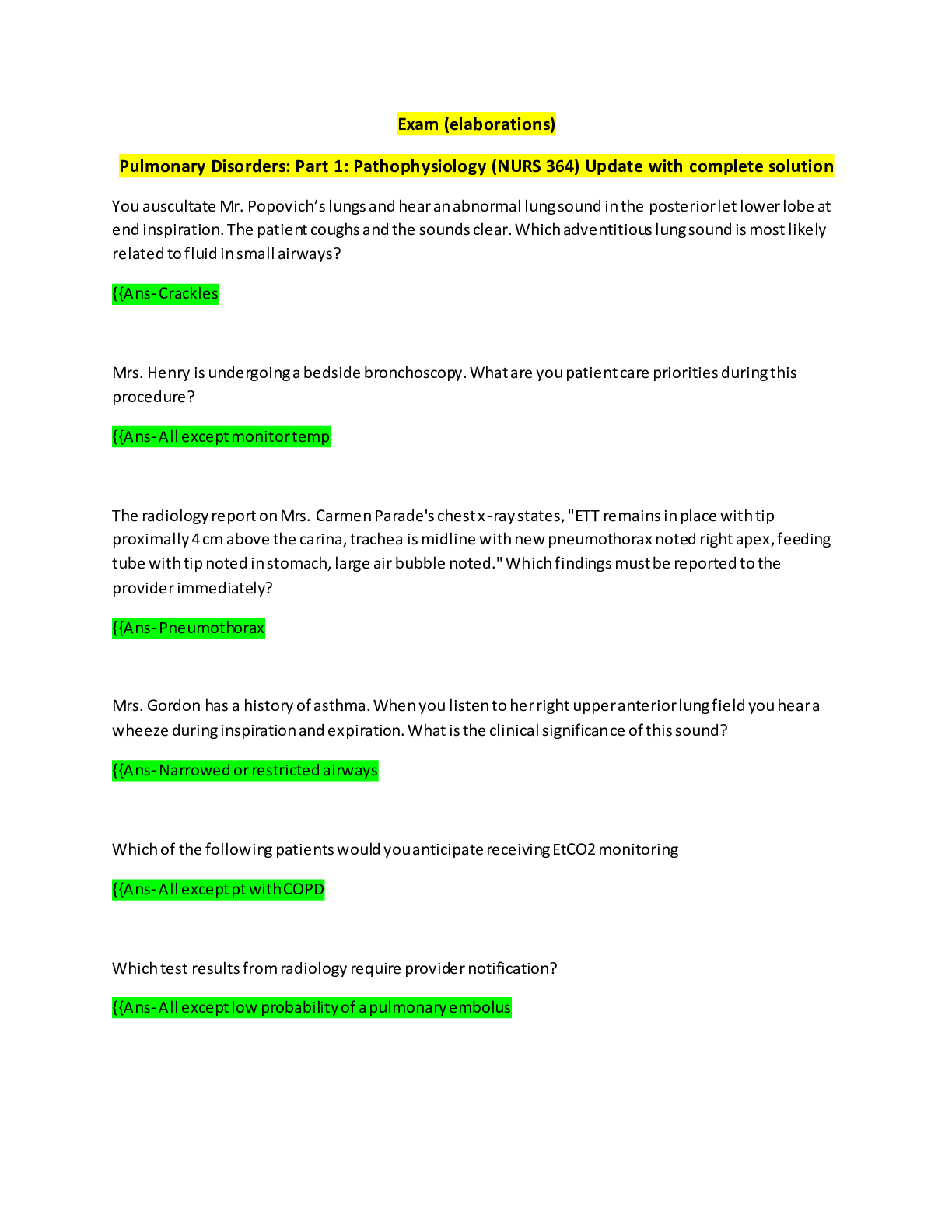
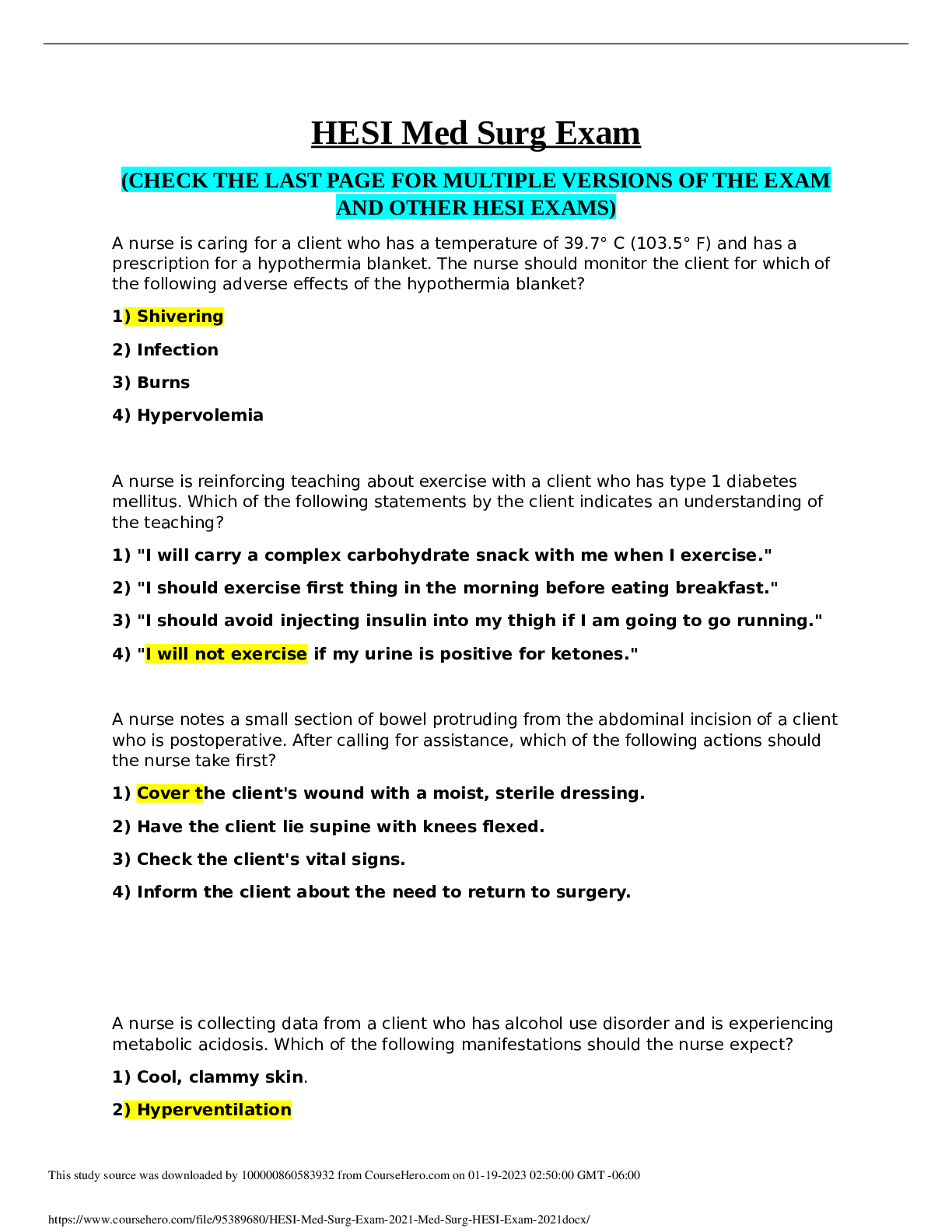


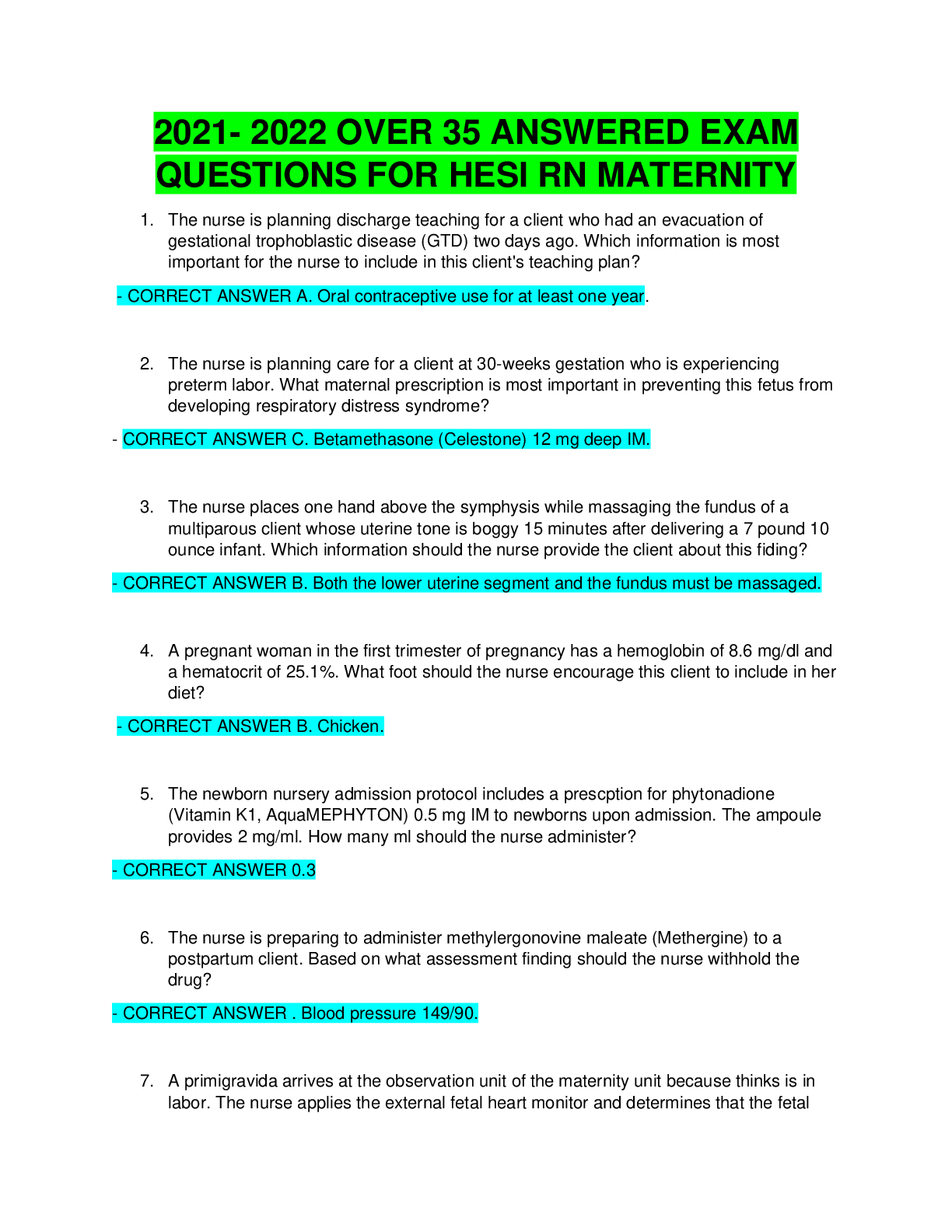
.png)

